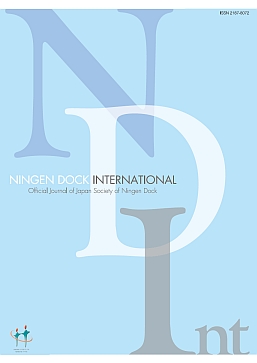Current issue
Displaying 1-12 of 12 articles from this issue
- |<
- <
- 1
- >
- >|
Original Article
-
2023 Volume 10 Issue 1 Pages 1-11
Published: 2023
Released on J-STAGE: May 31, 2023
Advance online publication: May 10, 2022Download PDF (1433K) -
2023 Volume 10 Issue 1 Pages 12-19
Published: 2023
Released on J-STAGE: May 31, 2023
Advance online publication: August 05, 2022Download PDF (274K) -
2023 Volume 10 Issue 1 Pages 20-24
Published: 2023
Released on J-STAGE: May 31, 2023
Advance online publication: August 05, 2022Download PDF (173K) -
2023 Volume 10 Issue 1 Pages 25-31
Published: 2023
Released on J-STAGE: May 31, 2023
Advance online publication: October 07, 2022Download PDF (964K) -
2023 Volume 10 Issue 1 Pages 32-38
Published: 2023
Released on J-STAGE: May 31, 2023
Advance online publication: January 27, 2023Download PDF (306K) -
2023 Volume 10 Issue 1 Pages 39-49
Published: 2023
Released on J-STAGE: May 31, 2023
Advance online publication: January 27, 2023Download PDF (435K) -
2023 Volume 10 Issue 1 Pages 50-61
Published: 2023
Released on J-STAGE: May 31, 2023
Advance online publication: January 27, 2023Download PDF (3466K) -
2023 Volume 10 Issue 1 Pages 62-72
Published: 2023
Released on J-STAGE: May 31, 2023
Advance online publication: January 27, 2023Download PDF (1031K) -
2023 Volume 10 Issue 1 Pages 73-81
Published: 2023
Released on J-STAGE: May 31, 2023
Download PDF (1160K) -
2023 Volume 10 Issue 1 Pages 82-85
Published: 2023
Released on J-STAGE: May 31, 2023
Download PDF (84K) -
2023 Volume 10 Issue 1 Pages 86-91
Published: 2023
Released on J-STAGE: May 31, 2023
Download PDF (255K)
Case Report
-
2023 Volume 10 Issue 1 Pages 92-97
Published: 2023
Released on J-STAGE: May 31, 2023
Advance online publication: October 07, 2022Download PDF (443K)
- |<
- <
- 1
- >
- >|
